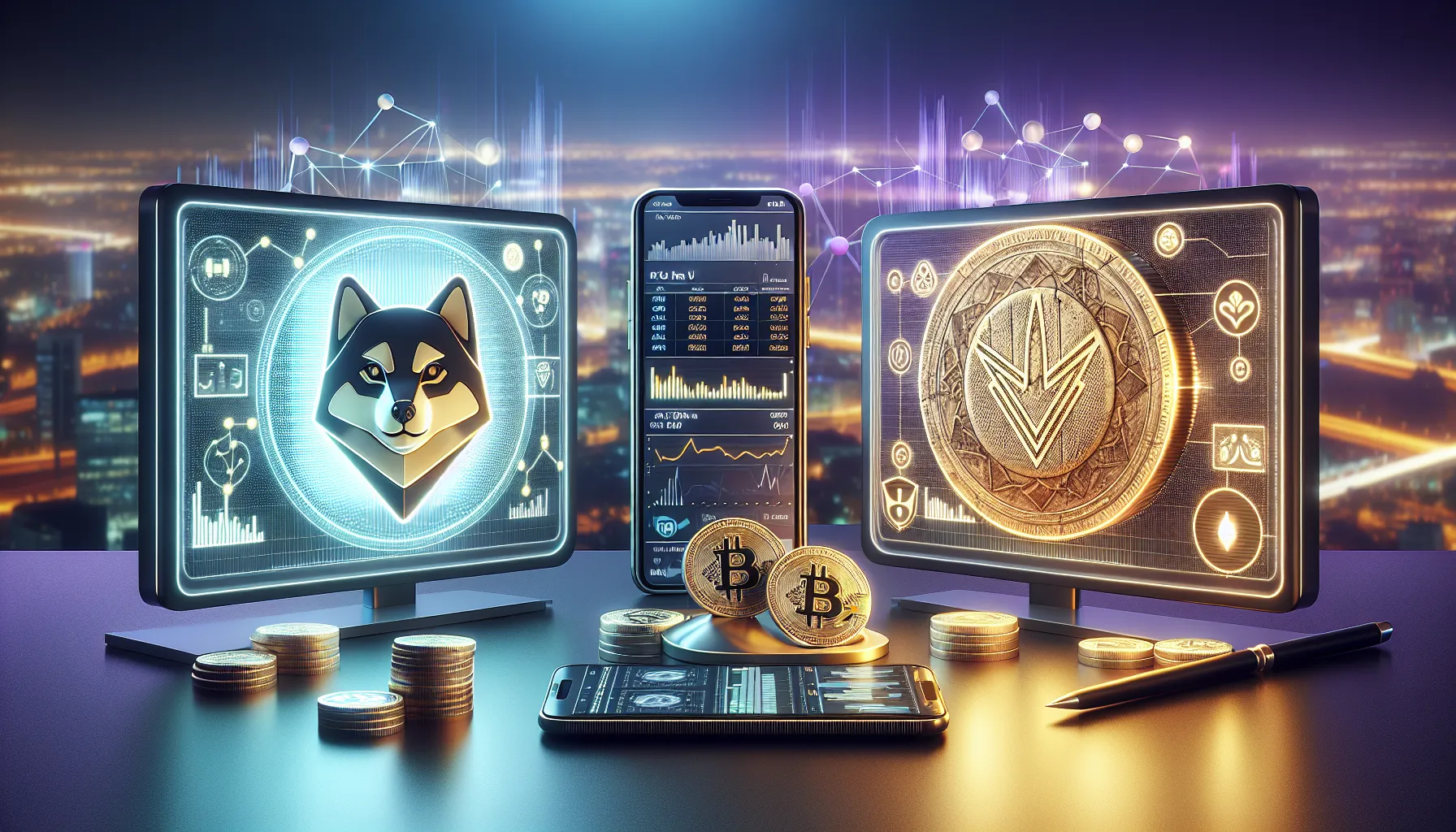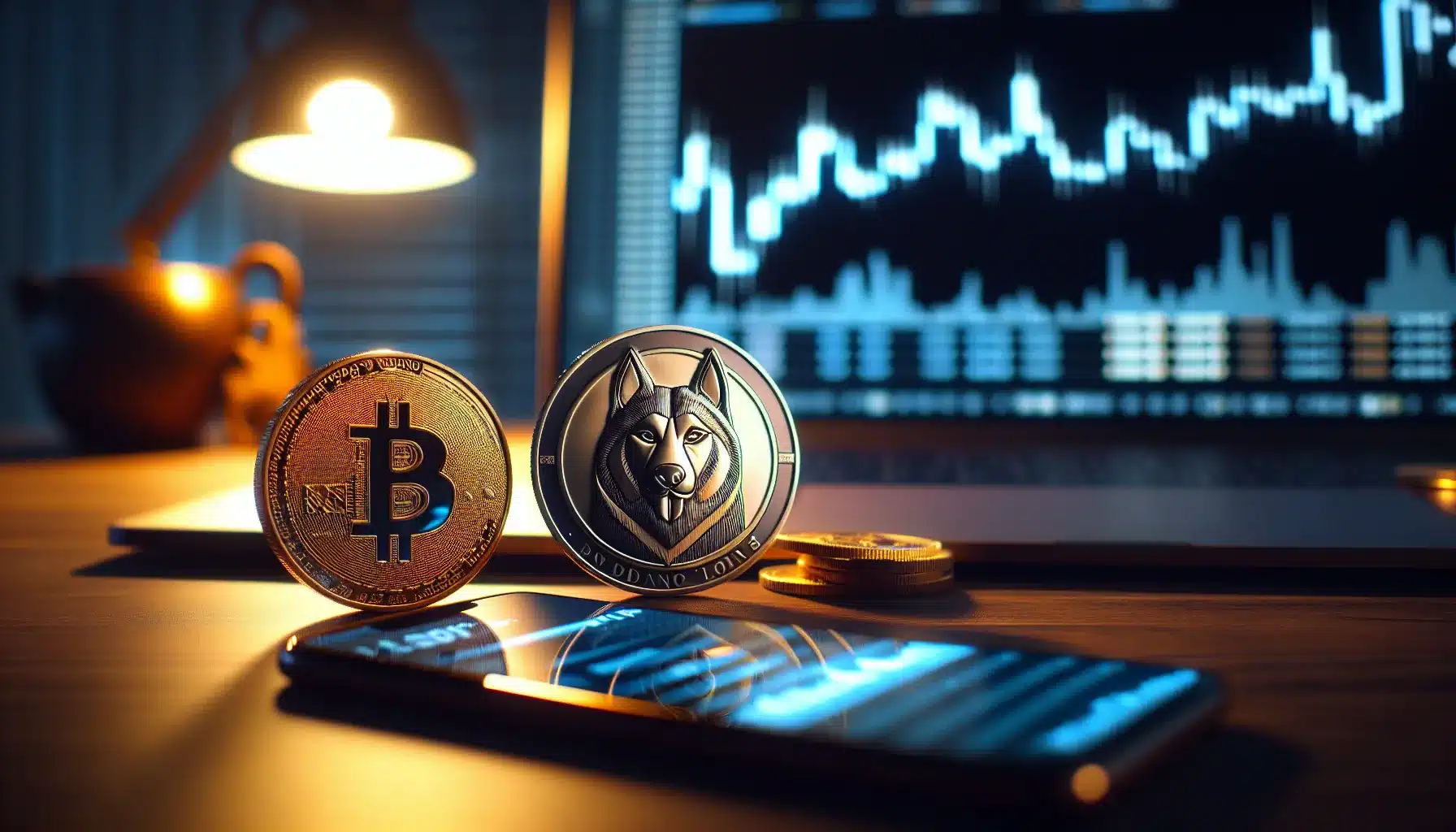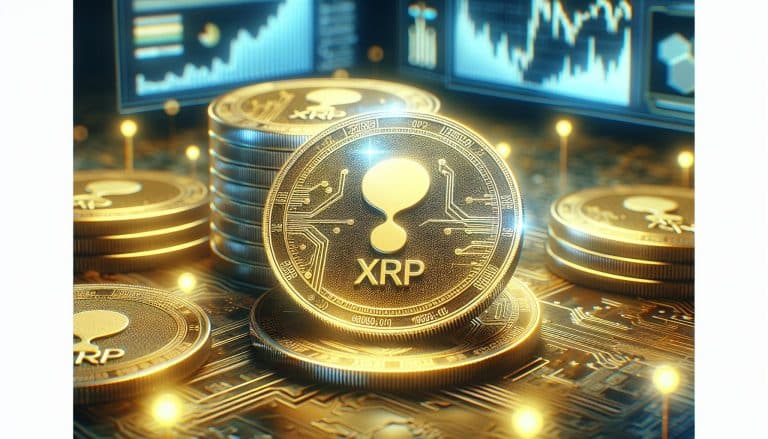Floki Inu vs Shiba Inu: Which Meme Coin Wins?
You’ve probably heard the stories. Someone’s cousin invested a few hundred dollars in a meme coin and walked away with enough to buy a Tesla. Or maybe you’ve watched Shiba Inu’s meteoric rise and wondered if lightning could strike twice with Floki Inu. The crypto world has no shortage of speculative tokens, but these two dog-themed coins have captured attention in ways that go far beyond simple internet jokes.
Shiba Inu burst onto the scene as the self-proclaimed “Dogecoin killer,” building a massive community and ecosystem that surprised even the skeptics. Floki Inu followed, leveraging aggressive marketing and a Viking-themed narrative that caught fire across social media. Both promise more than just memes, they’ve developed actual utilities, platforms, and roadmaps that attempt to justify their existence beyond pure speculation.
But here’s what you really want to know: if you’re considering adding one of these tokens to your portfolio, which one makes more sense? The question isn’t just about picking a winner in some hypothetical race. It’s about understanding the fundamental differences in their approaches, their communities, their ecosystems, and eventually, their risk-reward profiles. Let’s break down what separates Floki Inu from Shiba Inu and what that means for your investment decisions.
Key Takeaways
- Shiba Inu offers relatively more stability with higher liquidity, an established ecosystem including ShibaSwap and Shibarium, and a larger, battle-tested community known as the ShibArmy.
- Floki Inu presents higher risk with potentially greater upside due to its smaller market cap, aggressive real-world marketing campaigns, and cross-chain availability on both Ethereum and Binance Smart Chain.
- When comparing Floki Inu vs Shiba Inu, both tokens have survived multiple market cycles and built actual utility platforms, but neither should represent more than 1-5% of a diversified investment portfolio.
- Shiba Inu reached an all-time high in October 2021 with early investors seeing returns exceeding 40,000,000%, while Floki launched later in 2021 and remains significantly smaller by market capitalization.
- Both meme coins carry substantial regulatory risk, extreme volatility with potential 20-30% daily swings, and smart contract vulnerabilities that investors must carefully consider before entering positions.
Understanding Meme Coins: The Floki and Shiba Phenomenon

Meme coins represent one of crypto’s most fascinating contradictions. They start as jokes, ride waves of social media hype, and somehow manage to build legitimate projects that attract serious capital. Both Floki and Shiba fall into this category, though they’ve taken different paths to get where they are today.
What Is Shiba Inu (SHIB)?
Shiba Inu launched in August 2020 as an ERC-20 token on the Ethereum blockchain. Created by the anonymous developer known as “Ryoshi,” SHIB positioned itself as a decentralized alternative to Dogecoin. The project sent half of its total supply to Ethereum co-founder Vitalik Buterin, who later burned 90% of those tokens and donated the rest to charity, a move that generated massive publicity.
What started as a simple meme token quickly evolved. The Shiba Inu ecosystem now includes multiple tokens (SHIB, LEASH, and BONE), a decentralized exchange called ShibaSwap, and an ambitious layer-2 blockchain solution called Shibarium. The project has positioned itself as a complete ecosystem rather than just a speculative token, though whether that justifies its valuation remains hotly debated.
The community, known as the “ShibArmy”, has become one of crypto’s most vocal and organized groups. They’ve pushed for exchange listings, merchant adoption, and even lobbied to get SHIB accepted as payment by major retailers. This grassroots energy has been both a strength and a source of controversy, as the line between enthusiasm and unrealistic expectations can blur.
What Is Floki Inu (FLOKI)?
Floki Inu emerged in June 2021, inspired by Elon Musk’s announcement that he was naming his Shiba Inu puppy “Floki.” The timing wasn’t coincidental, the developers clearly understood the power of association with both Musk and the already-successful Shiba Inu brand.
Unlike many meme coins that remain purely speculative, Floki has invested heavily in real-world marketing and utility development from the start. You might have seen their advertisements on London buses or in Times Square. This aggressive marketing approach set them apart from competitors content to rely solely on organic social media growth.
Floki operates as a cross-chain token, available on both Ethereum and Binance Smart Chain. The project has developed several utility platforms, including Valhalla (a metaverse game), FlokiFi (DeFi products), and an NFT marketplace. They’ve also launched a prepaid card program and education platform, showing an unusual commitment to building actual products rather than just promises.
The Viking theme permeates everything Floki does, from their terminology to their marketing imagery. While this branding might seem superficial, it’s created a distinct identity that helps differentiate Floki in a crowded field of dog-themed tokens.
Market Performance and Price History
Past performance never guarantees future results, but understanding how these tokens have behaved gives you insight into their volatility patterns and community strength during different market conditions.
Shiba Inu’s Market Position and Historical Performance
Shiba Inu experienced one of the most spectacular runs in crypto history during 2021. Early investors saw returns that exceeded 40,000,000% at the peak, the kind of numbers that generate both FOMO and cautionary tales. SHIB reached an all-time high of approximately $0.00008845 in October 2021, briefly making it one of the top ten cryptocurrencies by market capitalization.
That peak didn’t last. Like most assets caught in the 2021 crypto bubble, SHIB crashed hard during the subsequent bear market. The token lost more than 90% of its value from those highs, testing the resolve of even the most dedicated community members. Trading volume dried up, and critics declared the meme coin era dead.
But SHIB didn’t disappear. It maintained significant trading volume on major exchanges and continued development during the downturn. The token’s market cap has generally remained in the billions, making it one of the more established meme coins. This resilience matters more than you might think, most meme coins fade into obscurity after their initial hype cycle ends.
The launch of Shibarium in 2023 provided a catalyst for renewed interest, though it didn’t recreate the 2021 mania. Price movements have become somewhat more correlated with broader crypto market trends, suggesting SHIB is maturing (relatively speaking) as an asset.
Floki Inu’s Market Position and Price Trends
Floki’s price history is shorter but follows a similar boom-bust pattern. The token peaked in late 2021 during the same euphoric period that lifted most crypto assets. Early investors made substantial returns, though nothing matching Shiba Inu’s most extreme early gains.
What distinguishes Floki’s price action is the impact of its marketing campaigns. You can often spot correlation between major advertising pushes and price spikes. This suggests the token is particularly susceptible to sentiment-driven moves, for better or worse.
Floki’s market cap typically sits well below Shiba Inu’s, usually by a significant margin. This creates an interesting dynamic for investors. Some see the smaller market cap as an opportunity, if Floki can capture even a fraction of SHIB’s success, percentage gains could be substantial. Others view it as evidence that Shiba Inu has already won the meme coin competition.
Trading volume for FLOKI tends to be more volatile than SHIB’s, with quiet periods punctuated by intense activity. This can make entry and exit timing more critical. You’ll face wider spreads and potentially more slippage when making large trades compared to the more liquid SHIB market.
Tokenomics and Supply Comparison
Tokenomics might sound like crypto jargon, but it directly affects your potential returns and long-term holder experience. Both tokens use large supply numbers and deflationary mechanisms, though with important differences.
Shiba Inu launched with a total supply of one quadrillion tokens, that’s fifteen zeros. After Vitalik Buterin’s burn, the circulating supply dropped significantly, though hundreds of trillions remain in circulation. This massive supply means SHIB will likely never reach one cent, let alone one dollar. The math simply doesn’t work at current market conditions. When you’re buying SHIB, you’re investing in percentage moves, not dreams of dollar-price tokens.
SHIB implements burning through various mechanisms. Transaction fees on ShibaSwap contribute to burns, and the community has launched burning initiatives to reduce supply over time. The Shibarium layer-2 also incorporates burn mechanisms. These burns happen automatically, though the rate varies based on network activity. Whether this burning is sufficient to meaningfully impact price remains debatable, you’re talking about burning millions or billions from a supply measured in hundreds of trillions.
Floki Inu has a smaller initial supply, though still measured in trillions. The token implemented a transaction tax that funds marketing, development, and burns. This tax means every transaction automatically contributes to the project’s treasury and reduces supply. It’s a double-edged mechanism, beneficial for long-term holders but potentially discouraging for traders who make frequent moves.
The cross-chain nature of Floki adds complexity. Token supplies exist on both Ethereum and Binance Smart Chain, with bridges connecting them. This creates arbitrage opportunities but also introduces additional smart contract risk. You need to understand which chain you’re buying on and the implications for transferring between them.
Neither token has a maximum supply cap in the traditional sense, but both have committed to deflationary mechanisms that reduce supply over time. The effectiveness of these burns depends entirely on transaction volume and network activity. During quiet periods, deflation slows dramatically. This makes tokenomics partially dependent on maintaining community engagement and usage.
Ecosystem and Utility: Beyond the Meme
This is where the rubber meets the road. A meme can launch a coin, but utility determines whether it survives long-term. Both projects have built ecosystems that attempt to justify their valuations with actual products and services.
Shiba Inu Ecosystem: ShibaSwap, Shibarium, and More
ShibaSwap represents Shiba Inu’s entry into decentralized finance. The platform allows you to swap tokens, provide liquidity, and stake your SHIB holdings for rewards. It’s functional and has processed billions in volume, though it faces fierce competition from established DEXs like Uniswap and SushiSwap. The user interface won’t win design awards, but it works.
The real ambition shows in Shibarium. This layer-2 blockchain aims to reduce transaction costs and increase speed for the Shiba ecosystem. Layer-2 solutions have become critical for Ethereum-based projects dealing with high gas fees. Shibarium launched with typical new-network hiccups but has gradually stabilized. The blockchain incorporates burn mechanisms that remove SHIB from circulation with each transaction, theoretically creating deflationary pressure.
Shiba Inu has also ventured into NFTs and metaverse projects, though with mixed results. The SHIB metaverse remains largely conceptual, with virtual land sales generating initial interest but limited follow-through on actual development. NFT collections have launched but haven’t achieved the cultural impact or floor prices of top-tier projects.
The ecosystem includes BONE and LEASH tokens that serve specific functions. BONE acts as the governance token, allowing holders to vote on proposals. LEASH serves as a rewards token with much lower supply. This multi-token approach adds complexity and can confuse newcomers trying to understand how everything fits together.
Floki Inu Ecosystem: Valhalla, FlokiFi, and Marketing Power
Valhalla is Floki’s flagship product, a metaverse game where players can battle, trade, and earn rewards. Unlike many crypto games that remain vaporware, Valhalla has launched in playable form. The game won’t compete with AAA titles, but it demonstrates actual product delivery. Players can use FLOKI tokens within the game economy, creating a use case beyond pure speculation.
FlokiFi represents the project’s DeFi offerings, including a locker service for tokens and liquidity. These tools serve practical purposes for other crypto projects and generate usage-based revenue. The prepaid card program allows FLOKI holders to spend their tokens in the real world, though adoption remains limited.
Floki’s commitment to marketing deserves recognition, even if you find it excessive. The project has spent millions on advertising in major cities worldwide. This approach prioritizes visibility over organic growth, betting that exposure will drive adoption. Whether this strategy proves sustainable depends on whether awareness converts to actual usage.
The education platform called Floki University offers crypto courses, positioning the project as more than just a speculative token. This gives Floki a narrative about spreading crypto knowledge, though how many people actually use the platform versus how many people invest in FLOKI remains unclear.
Both ecosystems share a common challenge: building products people actually want to use rather than products that exist solely to justify a token’s existence. Usage metrics matter more than announcements, and by that measure, both projects still have much to prove.
Community Strength and Social Media Presence
In the meme coin world, community isn’t just marketing, it’s the fundamental value proposition. Without engaged holders who promote the project and resist selling during downturns, these tokens collapse quickly.
The ShibArmy has demonstrated remarkable staying power. Through multiple crypto winters and countless negative news cycles, Shiba Inu’s community has remained active and vocal. They’ve organized to petition exchanges for listings, coordinate burn events, and defend the project against critics. This cohesion matters when you’re evaluating long-term viability.
Social media metrics favor Shiba Inu significantly. Twitter followers, Reddit subscribers, and Discord members all number in the hundreds of thousands or millions. This creates network effects, more community members mean more organic promotion, which attracts more members. The flywheel can work in both directions, but SHIB has maintained its momentum better than most meme coins.
Floki’s community, while smaller, shows higher engagement in some metrics. The “Floki Vikings” are intensely loyal and actively participate in marketing initiatives. You’ll see community members creating content, running local chapters, and organizing events without official coordination. This grassroots enthusiasm can compensate for smaller absolute numbers.
The Viking branding creates a distinct identity that resonates with certain demographics. Where Shiba Inu presents itself as a decentralized movement, Floki embraces a more aggressive, conquest-oriented narrative. This appeals to people who want to feel part of something bold and rebellious rather than just another dog coin.
Influencer support has fluctuated for both projects. Shiba Inu benefits from its association with early Dogecoin narratives and occasional Elon Musk mentions. Floki was literally inspired by a Musk tweet, though he’s never officially endorsed the project. Both communities amplify any perceived celebrity attention, sometimes reading far more into casual mentions than warranted.
You should consider community strength as a leading indicator. When engagement drops, price usually follows. Both projects maintain active communities, but Shiba Inu’s larger base provides more stability. Floki’s smaller but more intense community could generate faster moves in either direction.
Risk Factors and Volatility Considerations
Let’s be direct: both of these investments carry substantial risk. You’re not buying blue-chip assets with predictable cash flows. You’re speculating on internet culture, community strength, and the possibility that meme coins continue capturing mindshare in an increasingly crowded crypto market.
Regulatory risk looms over all cryptocurrencies, but meme coins face particular scrutiny. Regulators question whether these tokens serve any legitimate purpose beyond speculation. While both projects have developed utility, that utility often feels like justification created after the fact. Future regulations could classify meme coins unfavorably, limiting their tradability or forcing exchanges to delist them.
Liquidity varies significantly between the two. Shiba Inu trades on virtually every major exchange with substantial volume. You can enter and exit positions quickly without significantly moving the market, assuming you’re not dealing with enormous sums. Floki has decent liquidity but considerably less depth. Large positions require more careful execution to avoid slippage.
Smart contract risk exists for both tokens. SHIB operates on Ethereum, one of the most battle-tested blockchains, but its ecosystem includes newer contracts for ShibaSwap and Shibarium. Floki’s cross-chain presence doubles your smart contract exposure. Bugs, exploits, or bridge failures could devastate token value overnight. Both projects have undergone audits, but audits don’t guarantee safety.
Volatility will test your emotional resilience. Both tokens can move 20-30% in a single day based on nothing more than a trending tweet or rumor. This creates opportunities for traders but torture for anyone checking prices frequently. If you can’t stomach watching your investment halve in value, you shouldn’t be in meme coins regardless of which one you choose.
The founders’ anonymity introduces risk. Ryoshi has stepped away from Shiba Inu entirely. Floki’s development team maintains pseudonymous presence but lacks the accountability of doxxed founders. This anonymity protects developers but leaves investors without recourse if things go wrong.
Market cycle timing matters enormously. Both tokens performed dramatically better during the 2021 bull market than in subsequent years. Entering during peak hype almost guarantees losses. Understanding where we are in broader crypto market cycles will impact your returns more than choosing between these two tokens.
Which Coin Is Right for Your Portfolio?
Your decision shouldn’t be based on which coin has better memes or which community shouts louder. It comes down to your specific situation, risk tolerance, and investment thesis.
Choose Shiba Inu if you want relative stability within the volatile meme coin category. SHIB’s larger market cap, better liquidity, and more established ecosystem make it the “safer” choice, and I’m using that term very loosely. You’re buying the market leader in dog-themed tokens not named Dogecoin. The downside is that SHIB has already experienced its most explosive growth phase. Expecting another 1,000x seems unrealistic. You’re looking at more modest multiples if another bull market materializes.
Shiba Inu makes sense if you’re allocating a small portion of your portfolio to meme coins as a speculative play but want something with some track record. The ShibArmy’s dedication has been tested through difficult markets. Shibarium provides a narrative for future development. You can get in and out without excessive friction on virtually any exchange.
Consider Floki Inu if you’re willing to accept higher risk for potentially higher rewards. The smaller market cap means more room for growth percentage-wise, assuming Floki can capture attention during the next bull cycle. The aggressive marketing approach has proven somewhat effective. Products like Valhalla demonstrate actual development progress rather than just promises.
Floki suits investors who missed Shiba Inu’s early days and want exposure to a “second wave” meme coin. The Viking branding and cross-chain presence differentiate it from pure SHIB clones. But, you’re accepting lower liquidity, higher volatility, and the possibility that Floki never achieves critical mass adoption.
Your allocation matters as much as your choice. Neither of these should represent a significant portion of your investment capital unless you’re specifically building a high-risk crypto portfolio and understand you might lose everything. Most serious investors cap meme coin exposure at 1-5% of their total portfolio.
Timing considerations differ between the two. Shiba Inu’s larger liquidity means you can accumulate positions gradually without significantly impacting price. Floki’s lower volume means large purchases might need to be staged over time to avoid buying at inflated prices from your own demand.
Don’t fall into the trap of buying both thinking you’re diversifying. These tokens move together based on overall meme coin sentiment. If one crashes, the other probably will too. You’re not reducing risk by splitting your allocation between highly correlated assets.
Conclusion
The Floki Inu versus Shiba Inu debate doesn’t have a universal right answer. Both tokens offer speculative exposure to meme coin culture with different risk-reward profiles. Shiba Inu brings market leadership, better liquidity, and a more established ecosystem. Floki Inu offers higher growth potential from a smaller base, distinctive branding, and aggressive marketing.
What matters most is recognizing what you’re actually buying. These aren’t companies with revenue or products with inherent value. You’re speculating on community strength, narrative power, and the possibility that internet culture continues generating real-world financial impact. That can be profitable, but it requires honesty about the risks involved.
Both projects have survived longer than most meme coins, suggesting they’ve built something with at least temporary staying power. Whether that translates to future gains depends on factors largely outside anyone’s control, market sentiment, regulatory developments, and the fickle nature of internet attention.
If you decide to invest in either token, go in with eyes open and money you can afford to lose completely. Set clear entry and exit points before emotions take over. And remember that the most important decision isn’t which meme coin to buy, but whether meme coins belong in your portfolio at all. That’s a question only you can answer based on your financial situation, goals, and ability to handle extreme volatility without panic selling at the worst possible moment.
Frequently Asked Questions
What is the main difference between Floki Inu and Shiba Inu?
Shiba Inu is a larger, more established meme coin with better liquidity and a comprehensive ecosystem including ShibaSwap and Shibarium. Floki Inu is smaller with aggressive marketing, cross-chain functionality, and potentially higher growth potential but increased volatility and risk.
Which has better long-term potential: SHIB or FLOKI?
Shiba Inu offers relative stability as the market leader with proven community resilience, while Floki Inu provides higher risk-reward potential from its smaller market cap. Your choice depends on risk tolerance—SHIB for safer meme coin exposure, FLOKI for speculative upside.
How do Shiba Inu and Floki Inu reduce token supply?
Both use deflationary mechanisms through burns. Shiba Inu burns tokens via ShibaSwap transactions and Shibarium fees. Floki Inu implements a transaction tax that automatically funds burns, marketing, and development with every transfer, though effectiveness depends on network activity.
Can Shiba Inu or Floki Inu reach $1?
Neither token can realistically reach $1 due to massive circulating supplies measured in hundreds of trillions. Even with aggressive burning, the math doesn’t support dollar valuations at current market conditions. Investors should focus on percentage gains rather than price targets.
Are meme coins like SHIB and FLOKI good investments?
Meme coins are highly speculative investments with extreme volatility and significant risk of total loss. They’re suitable only for investors who can afford to lose their entire investment and should represent no more than 1-5% of a diversified portfolio.
What percentage of my portfolio should be in meme coins?
Most serious investors limit meme coin exposure to 1-5% of their total portfolio. These are high-risk, speculative assets driven by sentiment rather than fundamentals. Only invest money you can afford to lose completely without impacting your financial security.






 Bitcoin
Bitcoin  Ethereum
Ethereum  Tether
Tether  XRP
XRP  USDC
USDC  Lido Staked Ether
Lido Staked Ether  TRON
TRON  Dogecoin
Dogecoin  Cardano
Cardano  Figure Heloc
Figure Heloc  WhiteBIT Coin
WhiteBIT Coin  Wrapped stETH
Wrapped stETH  Bitcoin Cash
Bitcoin Cash  Wrapped Bitcoin
Wrapped Bitcoin  Chainlink
Chainlink  USDS
USDS  Hyperliquid
Hyperliquid  Binance Bridged USDT (BNB Smart Chain)
Binance Bridged USDT (BNB Smart Chain)  WETH
WETH  LEO Token
LEO Token  Stellar
Stellar  Wrapped eETH
Wrapped eETH  Monero
Monero  Ethena USDe
Ethena USDe  Coinbase Wrapped BTC
Coinbase Wrapped BTC  Litecoin
Litecoin  Avalanche
Avalanche  Sui
Sui  Hedera
Hedera  Zcash
Zcash  Shiba Inu
Shiba Inu  Dai
Dai  World Liberty Financial
World Liberty Financial  sUSDS
sUSDS  Cronos
Cronos  Toncoin
Toncoin  Polkadot
Polkadot  Uniswap
Uniswap  PayPal USD
PayPal USD  Ethena Staked USDe
Ethena Staked USDe  USDT0
USDT0  Mantle
Mantle  Aave
Aave  Bittensor
Bittensor  Canton
Canton  USD1
USD1  Bitget Token
Bitget Token  NEAR Protocol
NEAR Protocol